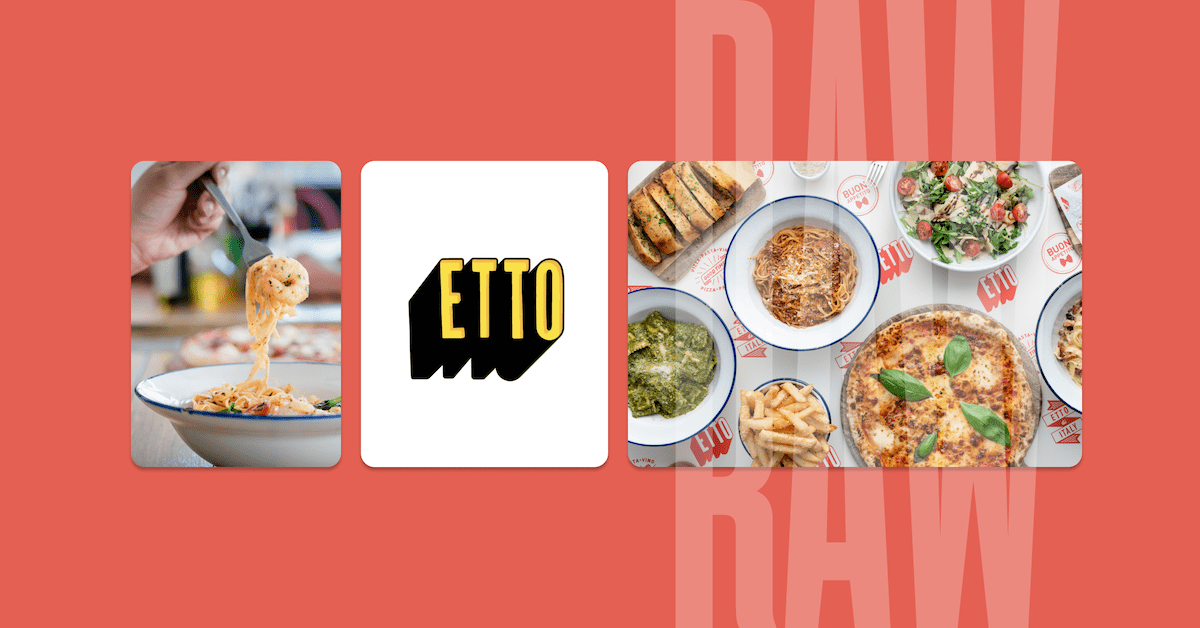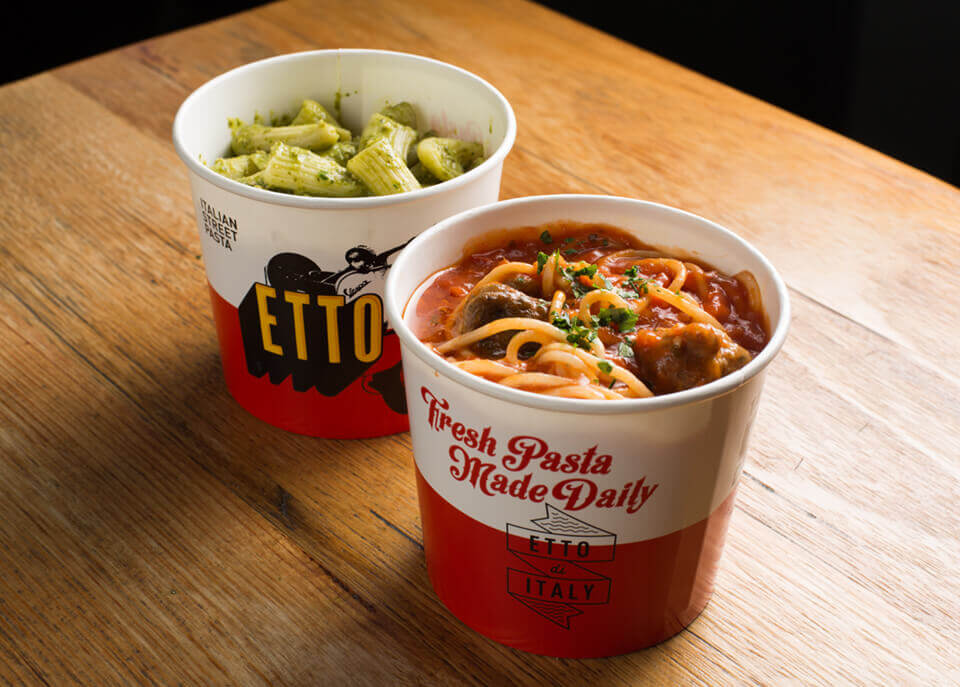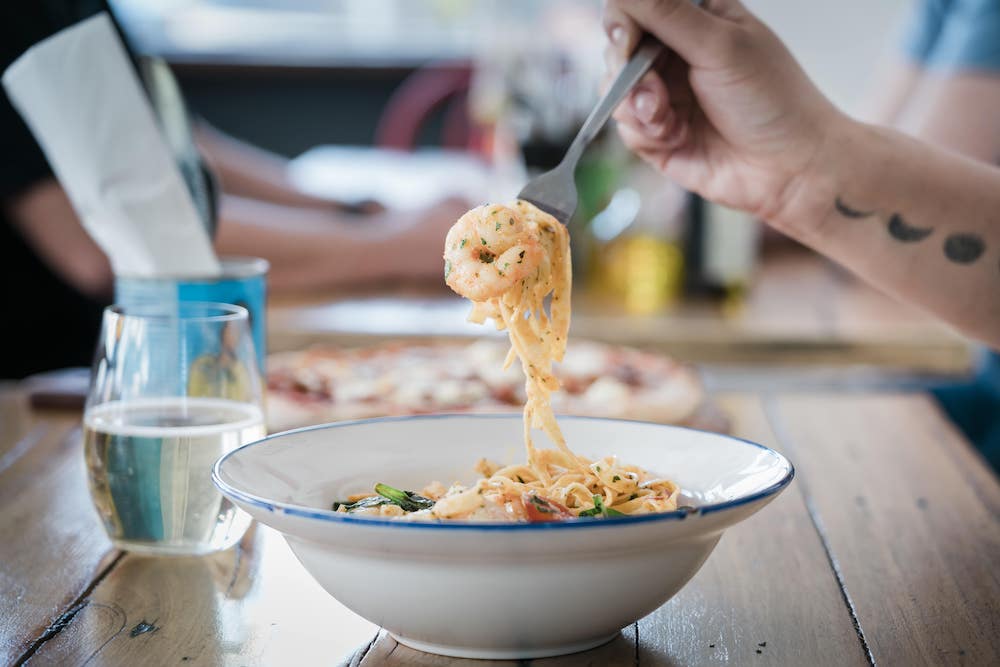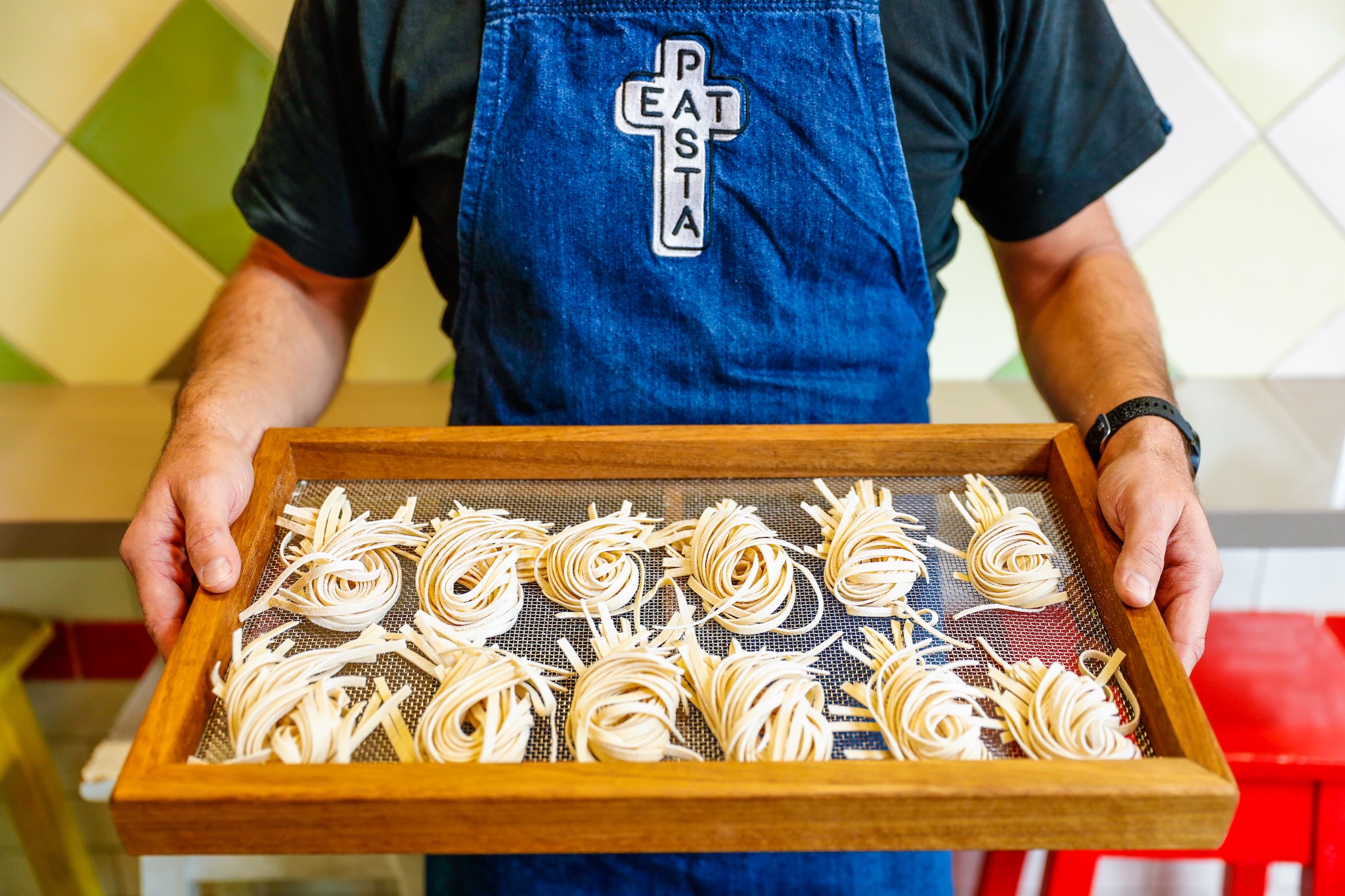
Dave Ansett and Stephane Meyer, Co-Founders of Etto Pasta Bar, fell in love with the Italian street food scene, which is so different to anything we have here in Australia, and were determined to bring the experience to Melbourne.
Launching in 2013, Etto pride itself on creating simple, hearty dishes from fresh ingredients in an atmosphere that shares the joy of eating with locals, similar to the trattorias of Italy.
Like many restaurants, Etto were quick to jump on the delivery bandwagon. However, in the last few years, they feel the customer experience on delivery platforms isn’t what it used to be.
Relishing a challenge and determined to create a better delivery experience, Dave & Stephane decided to take matters into their own hands.
We sat down with Dave in our new podcast series, RAW, to understand how Etto mastered the art of food delivery and why they decided to create an app of their own.
This is the story of Etto Pasta Bar.
Journey to delivery
“We have this thing we say, which is, once we run outta mistakes, we’ll be successful.”
The team at Etto don’t do things by half measures.
Dave and Stephane are prepared to go all in when there’s a new idea, service or technology. If it doesn’t work, they know they’ve given it their all and can chalk it up as a learning experience.
If it does work, they push even harder to make it a commercial success.
“Once we decide to try something, we throw everything at it. We’ve got a belief that we just don’t want to die wondering, we don’t want to look back and say, well, if we had invested more in that, could it have worked?”
And this is the approach they took when implementing delivery.
“When delivery came, we’d already heard about concepts similar to ours in the UK taking off when they embraced delivery. So it was on our radar, but we weren’t prepared to hire our own riders and buy our own bikes and build our own logistics software. So, when the first delivery platforms arrived in Melbourne, we were ready for them.”
After jumping on board with their first delivery partner, Dave and Stephane were quietly optimistic about their trial run.
“I remember saying to Stefan, as we were about to start the trial in south Melbourne, if this could make us $500 a week in extra sales, that would be great.”
“We were prepared to give it a go early… and we hit $500 in the first three days. And as soon as we realised that we had something, and this is what we tend to do, we’ll go hell for leather.”
“If it works, we’ll work out how to then integrate into the business commercially. And so our story of delivery was that we’ve seen incredible growth, and we’ve invested a lot of time and energy in doing it well, but we’ve spent the last five or six years trying to work out how to actually do it.”
“We’re projecting about 8 million in delivery sales this year. So that’s incredible. It was great. It was much, much, much bigger than we ever dreamed of.”

Early days: Innovation for the perfect delivery
One of the biggest challenges for Dave and the team at Etto was to ensure their delivery experience was consistently impeccable while also being commercially viable.
This led them down the path of in-house innovation.
“One of the things I think we do very well compared to a lot of our peers is innovation. And we are constantly open to trying new things. We try them, and we track them with incredible discipline and then we’re prepared to invest and then drop it if it doesn’t work.”
“I think every significant business improvement is a story of a thousand things that you try. And delivery absolutely reads that way for us.”
For Etto, innovating its delivery process to ensure each dish retained its quality during delivery was paramount. As a result, Etto changed its delivery packaging four or five times in the first three to four years.
“So our product, our pasta product, specifically is fresh pasta. It’s a wonderful food type, but it cooks quickly. And then if you put it in a container and put a lid on it, it keeps cooking.”
“So we had to really work hard on our ingredients and our packaging and the way we kept it warm, waiting for the driver, to give that meal the greatest chance of being in the best quality when it arrived at the customer’s house.”
While changing delivery packaging a handful of times in a few years might not seem like a lot, hours of painstaking research went into each change, and every tweak was meticulously planned and measured.
“We’ve spent hundreds of hours researching how many holes in the lid that goes on to our container. What is the right-shaped container? Does it travel better when it’s deep or shallow, when it’s round or square, all of those things? Does it need to be wrapped in foil? Is it better in a paper bag or a plastic bag?”
“All of those decisions could end up making a small difference to the quality of the meal at the end.”

Source: Truly Deeply
Bumps in the road
After painstakingly testing, tweaking and innovating their delivery packaging, Etto encountered another bump in the road.
Delivery platforms began to introduce batching, changing the way drivers pick up and deliver food – which had a detrimental impact on Etto and their customers.
“So batching is where they will have a driver pick up three meals either from us or from us and other restaurants and then deliver them one at a time to three customers who live in vaguely the same direction.”
“And that makes a lot of sense from a profit perspective [for delivery platforms] because they pay the driver a little bit more, but they get paid three times as much in commissions and customer delivery fees. But what it means is, if you happen to be at the end of that chain, you could have something cooked an hour and a half ago, and it’s terrible.”
“So whilst it’s been an important step for Uber Eats in their profitability, it’s become the biggest issue for restaurants and something we talk with Uber about all the time.”
“It’s now the number one complaint that I have to deal with, why is my food so cold?”
Adapting for the future
With delivery being such an instrumental part of Etto’s business, Dave and Stephane knew things had to change. Despite numerous innovations, the team simply couldn’t combat the dramatically extended delivery times customers were now experiencing with delivery platforms.
Couple this with high commissions, and their delivery service was becoming unsustainable.
“We’re paying, you know, around 30% to the delivery platform, so that’s our profit margin gone… And when every order comes with that commission already taken out of it, that model struggles to work. You need really high volumes and really low costs for it to even work a bit.”
So, Dave and Stephane decided to take matters into their own hands and take delivery in-house.
“So that’s what we’ve been doing for the last two and a bit years. Trying to build our own technology and processes to allow us to take some of that delivery load off the big platforms and into our own hands in a way that will improve the economics for us and the speed at which we can get food from the oven into the hands of consumers.”
However, taking on delivery was no mean feat. At the time, Uber Eats was bringing in around 80% of Etto’s delivery sales, so Dave and Stephane had to really examine if this was the right step for the future of the business.
“That was literally the moment where we said, is there a solution here? If we were to build our own tech, could there be a solution with enough additional margin? Could it be done?”

All in for delivery
After much deliberation and consultation with fellow restauranteurs, Dave and Stephane decided to go all in with their own, in-house delivery app.
“We wanted to design a system where we make more money or have a lower cost per delivery than the platforms do, so the restaurant can make some profit… We want to make it cheaper for the customer and a better experience, so less cold food and cheaper for them.”
And, like all good things, building their own app took time.
“We thought we’d do it in a year. And here we are 26, 27 months later. They say in software: plan it, budget it, and then double how long it’s going to take and double how much it’s going to cost. And, that’s about where we’re at.”
Designing the best experience
When designing the app, the team at Etto didn’t want to reinvent the wheel. For the app to be successful, Dave and Stephane believed a similar in-app experience to existing delivery platforms was the best way to create a seamless transition for customers.
“The technology will work the same way as an Uber app works for the customer as well as for the restaurant.”
After all, convincing customers to try out a new platform is quite a task. So making the transition as easy and familiar as possible was key.
“It would be crazy for us to reinvent the wheel. That’s the customer experience that they expect. And largely, the experience will work the same way.”
“We don’t expect all customers will switch. We’ve got a vision that over time, 30% of our customers will move over onto our app, away from the big platforms. And that would be a significant change to our business and give us a level of sustainability that we seek.”
Online delivery: A fine balancing act
Dave and Stephane are realists and have a pragmatic approach to launching and growing their delivery app alongside their current Uber Eats system.
“The first question our friends have asked us is how are you gonna go head to head with Uber? And our answer to that is: we’re not because we’re not a platform model like them. We’re a piece of software that leverages the restaurant’s relationship with its customers.”
“We certainly haven’t built this with the expectation of creating a gigantic platform. Initially, it was just for us, just for our restaurants.”
“We have no intention of trying to compete with the big platforms. They’re our partners. We certainly don’t wanna be seen as competition to them. But naturally, there could be some growth in that marketplace.”
The real challenge for Etto is customer education. When the new app launches, the team will have to communicate the different benefits to their customers in the hope they’ll support the new endeavour.

“So there’s a bit of a challenge for us because as we talk to our customers, we’ve gotta talk to them about, this is something we’ve built for ourselves… so don’t expect to download the app and find thousands of restaurants on there. That’s not what this is about.”
“If you wanna order on your couch, we’ll get it to you quicker. We’ll pay the drivers more, we’ll charge you less, and we’ll be able to make a bit of profit on it. So, if that’s something that you can help us with, we’d be forever grateful.”
“However successful this ends up being for us, it will only be part of our delivery picture. There’s always gonna be people who love Uber.”
“So to make delivery work commercially, we’ve got to take a proportion of those delivery customers and work out how to make them profitable. And we are happy to then see that holistically as our whole delivery business.”
For Etto, balancing their delivery app with other platforms makes business sense. It all boils down to the desire to create a sustainable, economically viable service that benefits their customers but doesn’t eat too much into their bottom line.
And really, that’s the end goal. Making delivery more profitable for restaurants.
“For restaurants to make full margin on delivery, it will change the world for restauranters.”
Listen to Raw Podcast
Listen to the full interview with Dave on Taking on delivery and actually winning.

News you care about. Tips you can use.
Everything your business needs to grow, delivered straight to your inbox.


